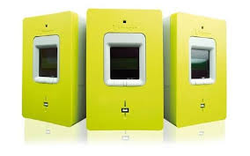March 27, 2018
Breaking news

Sept. 16, 2015
Events

Attendance at this conference can be validated under the continuing education of lawyers of Paris Bar.
After the holding of this conference, a French-written book will be published in the Regulations Series, edited by Marie-Anne Frison-Roche, in the French Publisher Dalloz.
Initially the Regulation assumes the consideration of technical objects (telephone, airplane, train, wheat, currency, electricity, etc.). This practical perspective opposes the abstract view of competition law that neutralizes objects by their monetary evaluation and the elaboration of a "fair price" obtained by the meeting of supply and demand in a market.Thus, each technical object has developed specific regulation as in a cottage garden: banking regulation, financial regulation, railway regulation, telecommunications regulation, power regulation, gaming regulation, horse races regulation, and so on. The body of rules and institutions were built, unique to each object, more effective than the behemoth that is the State in charge of all these so different objects and pursuing so many objectives that it was criticized for its inefficiency.
But different technical objects are not isolated from each other. As financial products have long taken the other items as "underlying". More Internet has introduced a novelty that could be radical.
Indeed, the Internet allows a circulation seems unhindered benefits that fall most often regulated sectors (financial services, health service, audiovisual services, etc.). Moreover, new objects appear, the "connected objects" whose creation is based on the Internet's ability to set effective relationship hitherto separate sectors, eg telecommunication and health services (the "connected health ).
Therefore, the Internet, which is often presented as a regulatory desert, appears as a jumble of different regulations, which contradict or are deformed by passing in the virtual world and crossing or even clashing with other regulation. So Internet would appear at first glance as a "space of interregulation".
The conference of 16 September 2015 dedicates its morning to draw up a diagnostic for measuring the "needs" of the Internet interregulation, so that the afternoon will allow to develop some "solutions" to interregulation. On this occasion, we can measure whether it will adapt traditional regulations because of new technologies and new uses, or more radically rethink sectoral regulations and regulatory law because Internet
Dec. 18, 2014
Breaking news

Virtual currency is a perfect example of the difficulties of interregulation: indeed, the bitcoins are currencies created on the Internet, usually to play games, such as poker. Thus intersect banking regulation, banking supervision, regulation and control of the game, Internet regulation itself.
In the US, the situation is complicated in that banking regulation is exercised at the state level, while the Internet is subject to intervention by federal regulators, including the Federal Communication Commission.
To solve this problem, the solution is to create a network of states banking regulators and supervisors, who adopt common rules. This is why the Conference of State Bank Supervisors, which is the network of state banking supervisors, created in 1902, has prepared a draft regulation of virtual currency, published December 16, 2014 and submitted for consultation for a month.
____
